PARABOLIC MICROPHONES
Reading Time: 5 minutessee also the blog
https://www.naturesound.it/2019/05/31/mono-or-stereo-microphones-in-parabola/
The parabolic microphone, or more simply the “parabola”, is the microphone system most used by those who record the sounds of birds and other living creatures in their habitats and allows recording at a distance from them. The parallelism with the photographic world leads to compare the parabola to a telephoto lens; that for simplify as much as possible, obviously leaving out all the various factors involved in photography, lens compression, depth of field, etc. Always on this analogy, with a parabolic microphone (which we will continue to call a parabola for simplicity) we obtain a 10 x amplification, equal to the magnification obtained with a 500 mm telephoto lens. A singing bird 50 meters away, recorded using a parabola it is as if it were singing at 5 meters from where we are recording it. So, if we extracted the microphone from the parabola and pointed it towards the singer who is 50 meters away, the signal would be recorded ten times lower in intensity than with the same microphone inserted at the focal point of the parabolic dish. Obviously not all roses, on the other side there is a different amplification of the frequencies in the parabola: the higher the frequencies, the more amplified. To restore the recorded signal in its original being, we need to attenuate the high frequencies. This is done via software, equalizing the frequencies as they are raised; there are “plug-ins” for the most common audio processing softwares, which sometimes automate that. However, the signal may be left as recorded with the parabola. Only a skilled “ear” on this type of recordings will hear the exaltated high frequencies. The ideal would be to be able “to miking” the subject . And this can be done indirectly by arming yourself with a lot of patience, placing a microphone with a recorder hidden near a singing roost, waiting for the subject to decide to collaborate. So, it’s easy to understand how the use of the parabola avoids this, speeding up everything simply by pointing it towards the singer.
vedi anche al blog
Il microfono parabolico, o più semplicemente la “parabola”, è il mezzo più utilizzato da chi registra i versi degli uccelli in ambiente naturale e permette di registrare mantenendosi a distanza dal soggetto emittente. Il parallelismo col mondo fotografico porta a paragonare la parabola ad un teleobiettivo. Questo per semplificare al massimo, tralasciando ovviamente tutti i vari fattori che intervengono nella fotografia, compressione dei piani, profondità di campo ecc. Rimanendo sempre in tale analogia, con un microfono parabolico (che continueremo a chiamare parabola per semplicità) si ottiene un’amplificazione 10 x, pari all’ingrandimento ottenuto con un teleobiettivo fotografico da 500 mm. Come a dire che un uccello in canto a 50 metri di distanza, ripreso con una parabola è come se si trovasse a cantare a 5 metri dal punto dal quale lo stiamo registrando. Quindi, se noi estraessimo il microfono dalla parabola e lo puntassimo verso il cantore che si trova a 50 metri di distanza, il segnale verrebbe registrato dieci volte più basso come intensità rispetto allo stesso microfono inserito con la sua capsula al punto focale del disco parabolico. Ovviamente non sono tutte rose e fiori, il rovescio della medaglia è una diversa amplificazione delle frequenze in parabola, più sono alte e più vengono amplificate. Per riportare il segnale registrato alla sua naturalitá, occorre intervenire attenuando le alte frequenze. Questo lo si fa via software, equalizzando le frequenze via via che si alzano; esistono dei “Plug in” per i più diffusi software di elaborazione audio, che in alcuni casi automatizzano tale operazione. Ad ogni modo, il segnale può non venire manipolato, lasciandolo così come registrato con la parabola. Solamente un orecchio educato a questo tipo di registrazioni coglierá l’esaltazione alle alte frequenze. L’ideale sarebbe il poter “microfonare” il soggetto. E questo lo si può fare indirettamente armandosi di molta pazienza, ponendo un microfono con un registratore occultati nei pressi di un posatoio di canto, aspettando che il soggetto decida di collaborare. Da ciò si intuisce perfettamente come l’utilizzo della parabola permetta di ovviare a questa operazione, velocizzando il tutto semplicemente puntandola verso il cantore.
Some types of parabolic microphones that are on the market and some do-it-yourself assemblies.
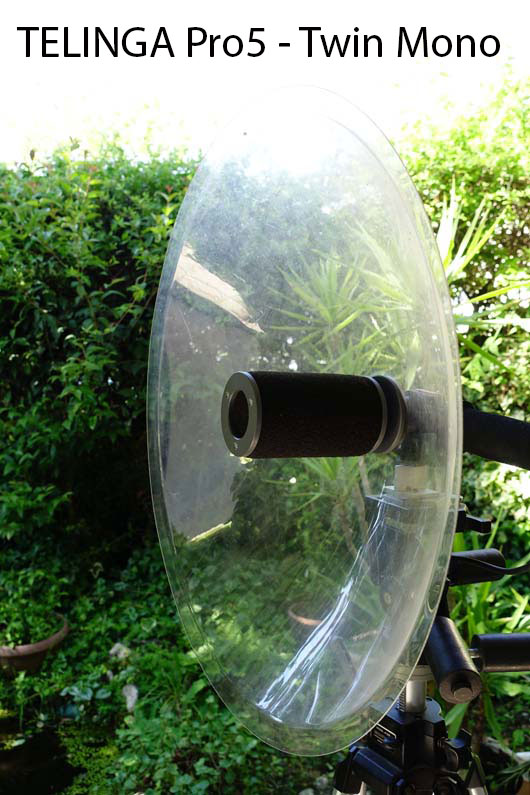
http://www.telinga.com/products/pro-series/
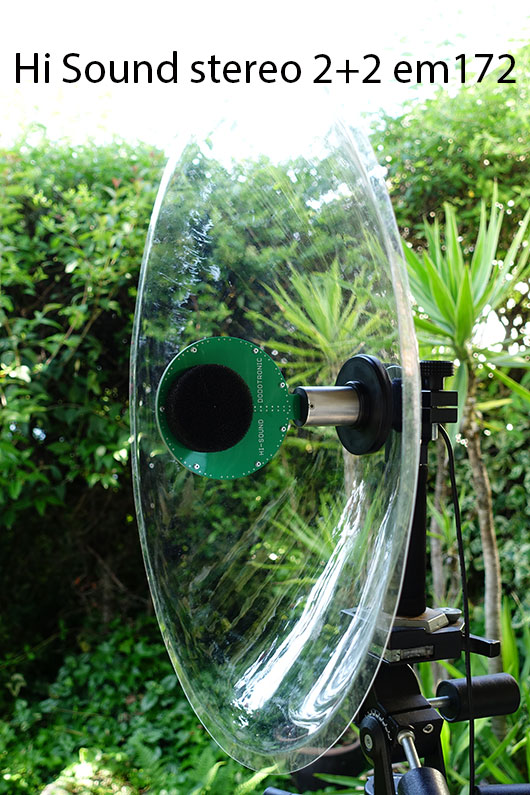
https://www.dodotronic.com/hi-sound-stereo/?v=cd32106bcb6d
____________________________________________________________________________________________________
Double PZM DIY stereo parabolic microphone
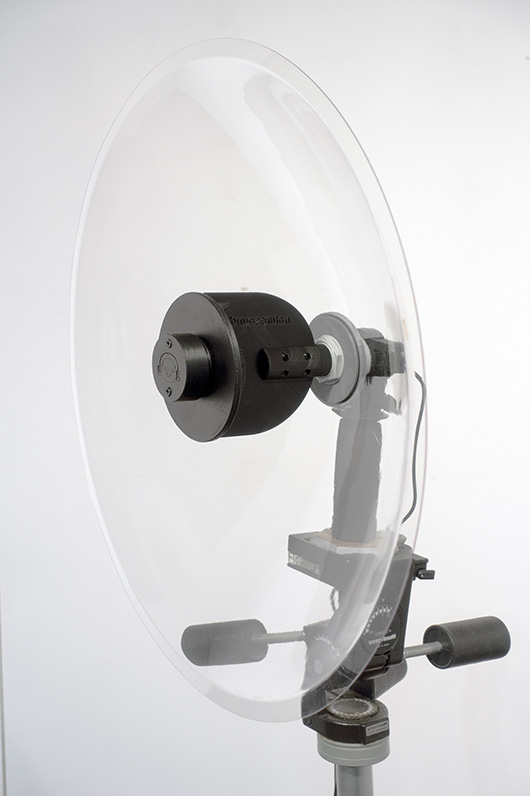
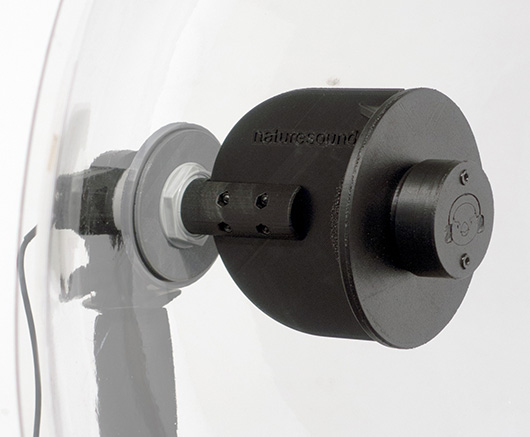
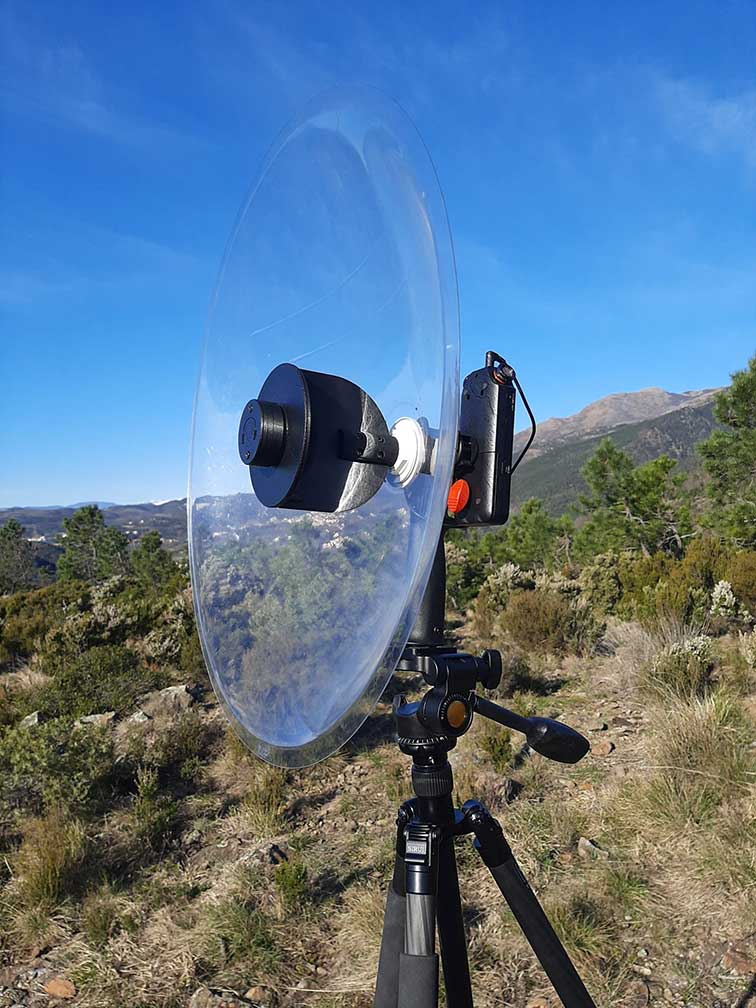
Photo courtesy of Luca Baghino
For a parabolic microphone DIY https://avesrares.wordpress.com/2016/04/28/diy-parabola/
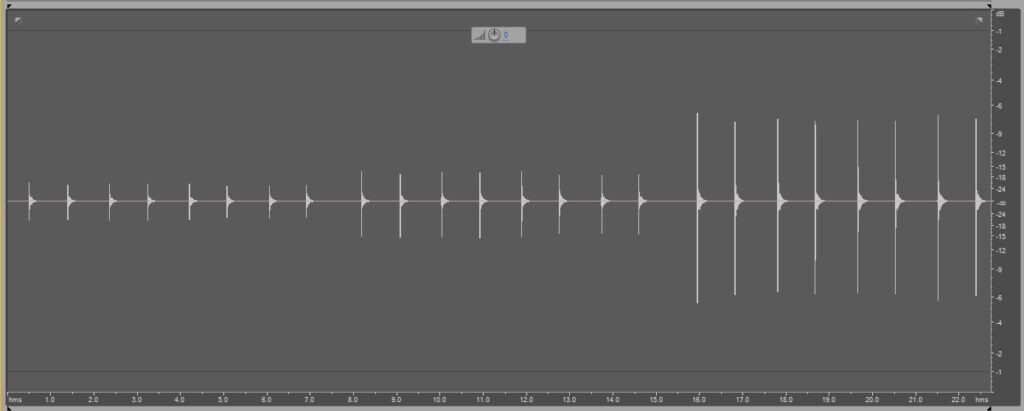
Waveform for: 1 x AOM 5024 – 3 x AOM 5024 – 2 x AOM 5024 in Double PZM configuration;
there is clearly an average increase of decibels with each change of configuration.
A double PZM configuration can be useful when you want an increase in distant and/or weak signals, for example during the recording sessions of Night Flight Calls, the so-called NFC.
__________________________________________________________________________________________________
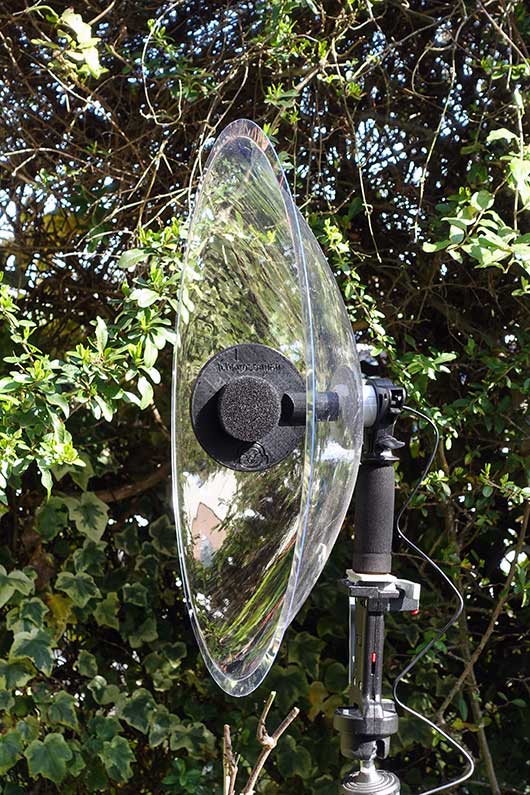
DIY 53 cm diameter Stereo Microphone
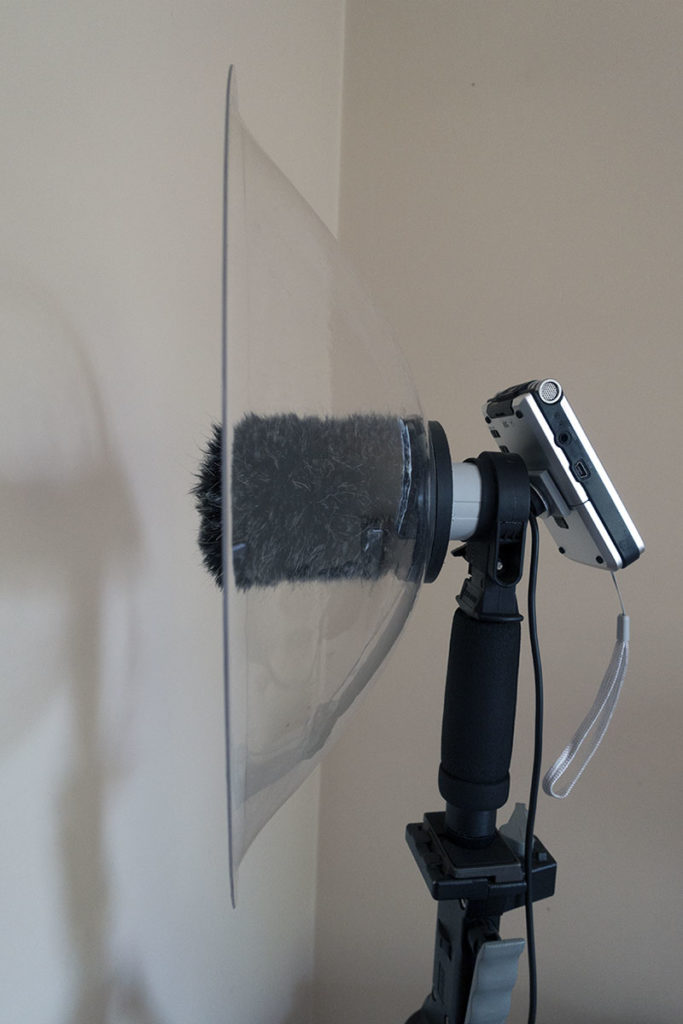
Dish 33 cm diameter – Mono mic 2 x Primo em172 (see Ortolan Bunting Song)
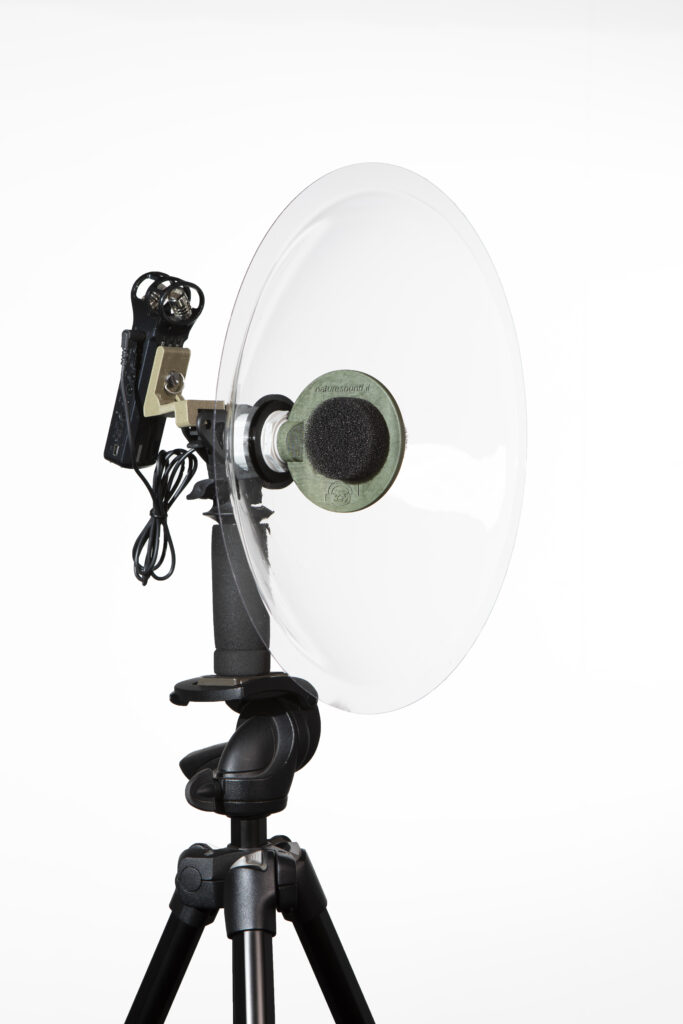
Dish 33 cm diameter – Stereo mic 2 x Primo em172 (see Guido Pinoli & Gianni Pavan recordings)
https://europe.beyerdynamic.com/m-88-tg.html
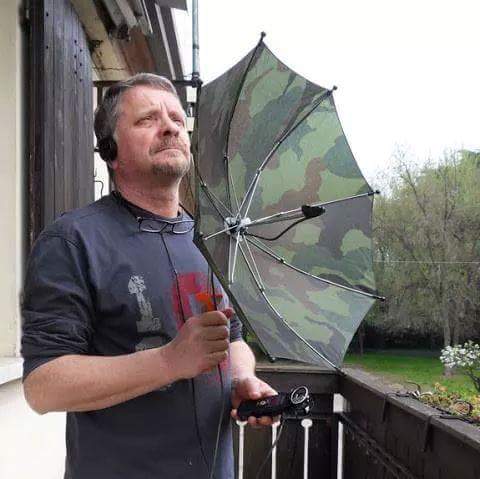
Even a simple umbrella can somehow have the effect of a parabolic reflector, with all the obvious limitations!

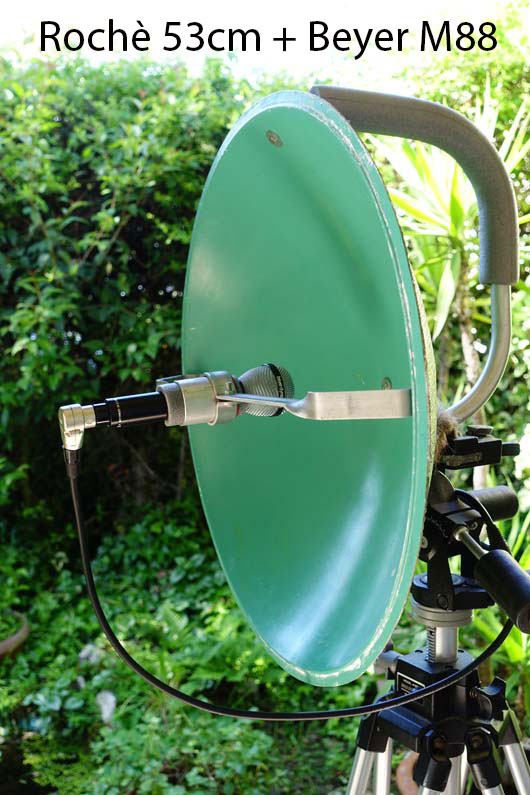
Commenti recenti